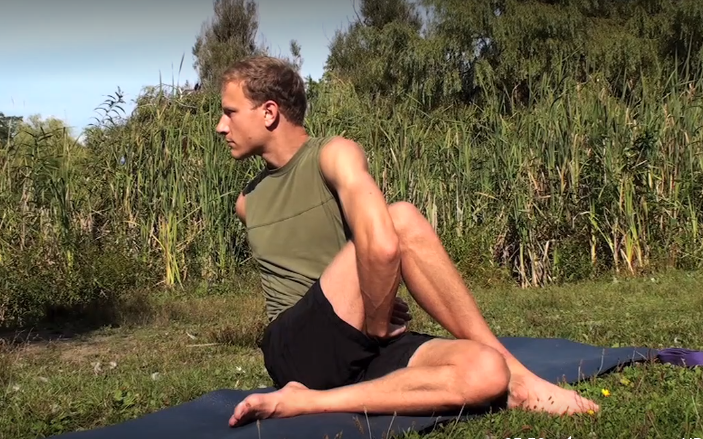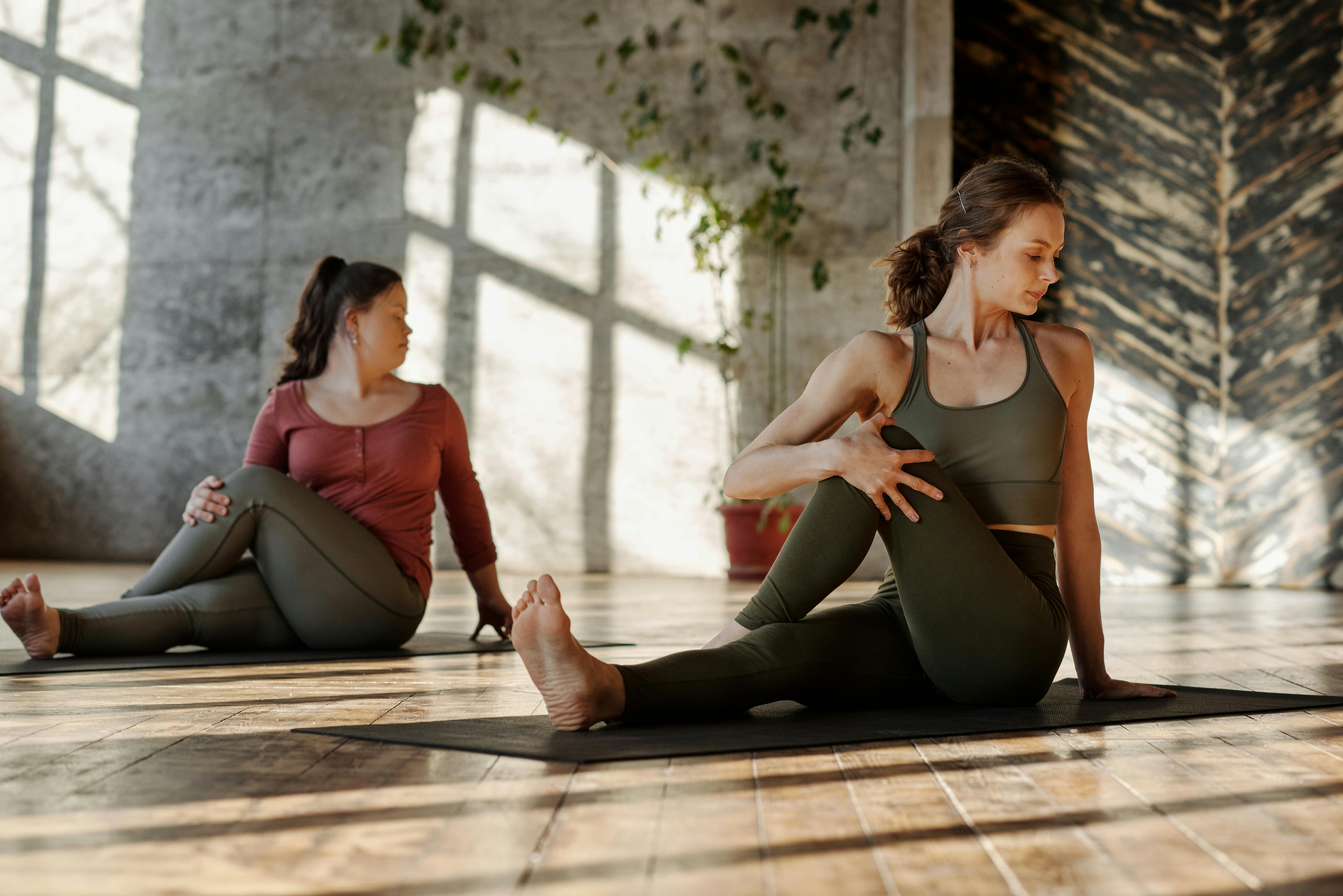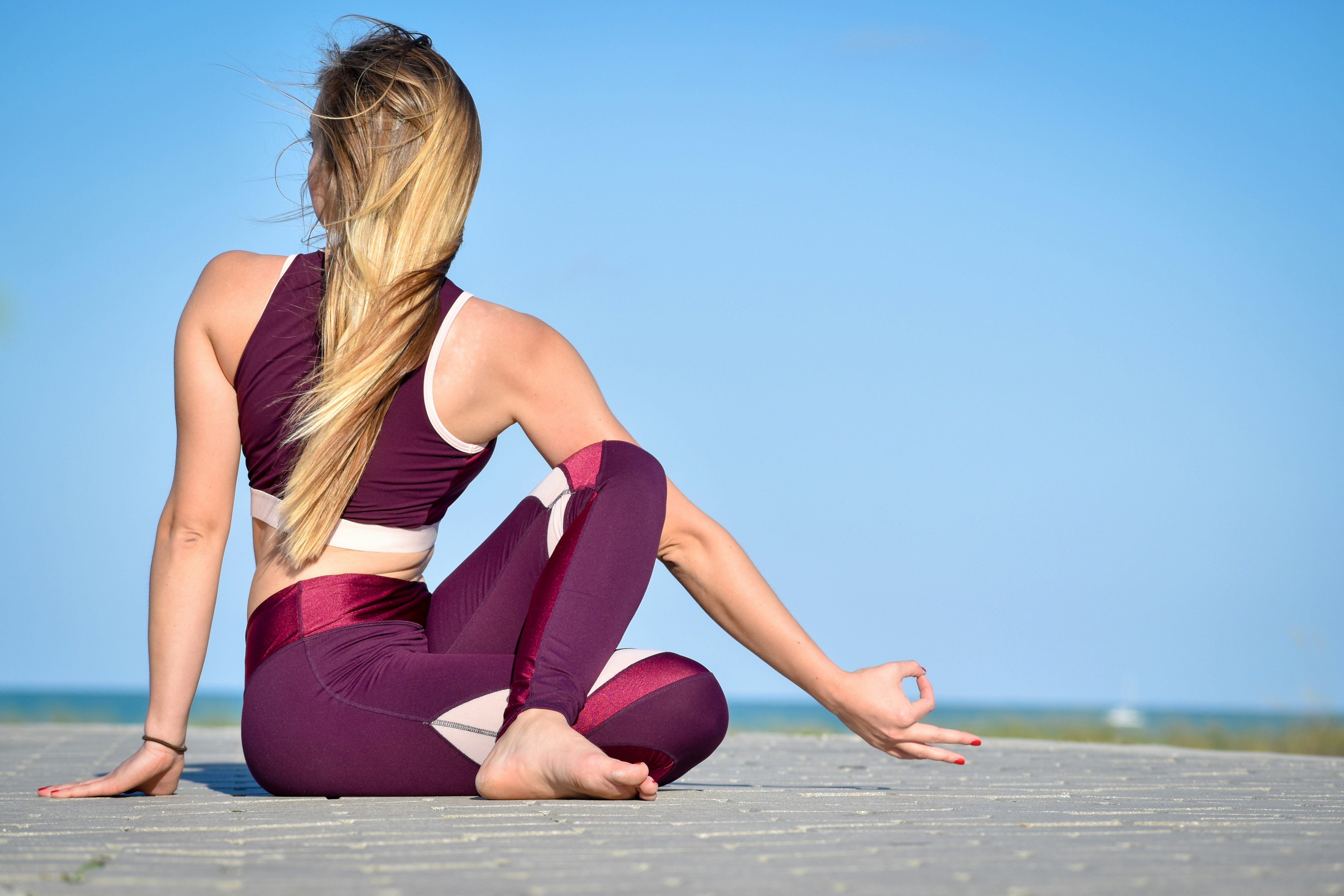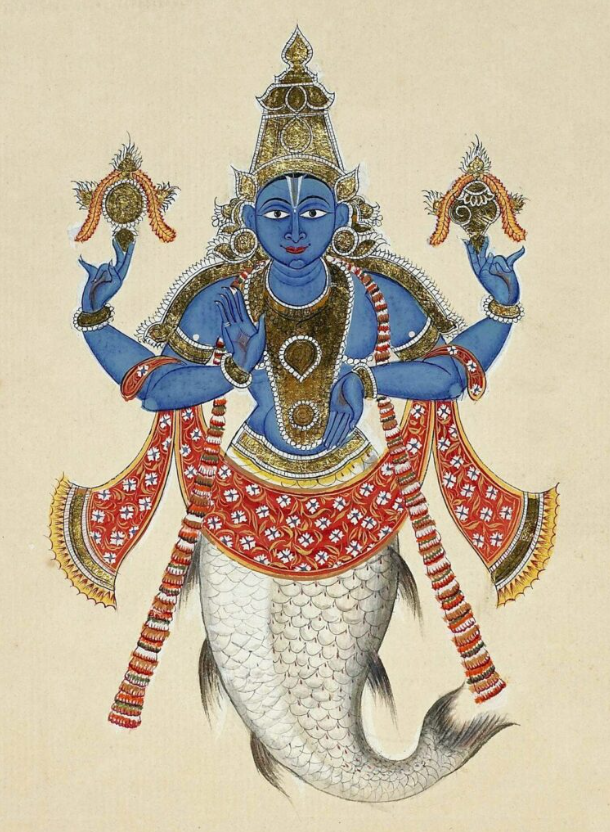Matsyendrasana, also known as the seated twist or Lord of the Fishes pose, is named after the legendary sage Matsyendra from Indian mythology. The pose symbolizes the twists and turns of life and the journey toward self-realization and inner balance.
This symbolism reflects Matsyendra’s life story, filled with elements of mystery, transformation, and divine inspiration. Although there have been many variations of this story throughout history, the takeaway remains the same: the transformative power of the yoga process.
So what can we learn from the myth about the sage Matsyendra?
The Story of Matsyendra
Matsyendra, often referred to as Matsyendranath, is one of the most revered sages in the history of yoga, setting the foundations of what is now considered hatha yoga.
The Legend Surrounding His Birth and Transformation
Matsyendra’s story begins mystically. According to a popular legend, Matsyendra was born from a fish. The story goes that, at one time, Lord Shiva, the deity and great yogi, was imparting the secrets of yoga to his consort, Parvati, on a secluded island.
Unbeknownst to them, a fish nearby overheard the entire discourse. Having so much knowledge, the fish was transformed into a human through divine grace—turned into a Siddha by Shiva. This transformation represented the birth of Matsyendra, which earned him his name, which means “Lord of the Fishes” (Matsya = fish, Indra = lord).
Another variation of the myth suggests that Matsyendra was born under inauspicious stars and was thus thrown into the ocean by his parents. He was then swallowed by a giant fish, and he lived there for many years. Then one day, swimming in shallow waters, the fish overheard Lord Shiva’s teachings about yoga to his wife. However, because these teachings were long, the wife fell asleep, and when Lord Shiva asked “Are you listening to me?” the fish replied: Yes!
Pleasantly surprised, Lord Shiva saved Matsyendra from the fish’s belly, turning him into a human.
Then there are those tales that say Matsyendra practiced yoga within the fish’s belly for twelve years, after which he emerged as an enlightened being.
Other variations also exist, as it always happens with myths. As these tales have been retold from generation to generation, the details keep changing, but Matsyendra’s transformation remains a central motif.
Matsyendra’s Yogic Journey
Matsyendra, now imbued with the wisdom of yoga, became a sage and a teacher.
He is often depicted as the founder of Hatha yoga and the Nath tradition, which emphasizes the physical aspects of yoga practice. Matsyendra traveled across India, where he shared his profound understanding of yoga and tantra.
Beyond these practices, it is believed that Matsyendra’s teachings laid the groundwork for many yogic practices that are still followed today.
His journey symbolizes transformation, but not just the physical transformation from a fish to a human. On a deeper level, Matsyendra’s true transformation is spiritual, because as he absorbed the teachings of yoga, his nature irrevocably changed.
The asana that was named after him mirrors all these themes beautifully, through the intense twist and opening of the body and mind.
The Person Behind the Myth
While Matsyendra’s legend is filled with mythological elements, there are also theories suggesting he was a historical figure whose life and achievements were later mythologized.
The sage Matsyendra is often revered as a saint and is credited with authoring several early texts on Hatha Yoga, including the Matsyendrasamhita and Kaulajnananirnaya.
Historical records and inscriptions, especially in regions like Nepal, suggest that Matsyendra was indeed a real person who lived between the 7th and 12th centuries. Here, the records also suggest that he was most influential in spreading the practices of Hatha and Tantra yoga. Researchers have not reached a consensus on the exact dates of his life, but it is widely accepted that he was a contemporary of other significant yogic figures of the time.
Whether Matsyendra was a real person or just a mythical character, his legacy in the physical practice of yoga, yogic prowess, and spiritual wisdom are still celebrated. He is honored as a great siddha (realized master) who transcended ordinary human limitations.
Significance of the Matsyendrasana Asana
The Lord of the Fishes Pose is an essential yoga pose that incorporates deep spinal twists and stretches. It engages the core, hip flexors, and spinal muscles, promoting flexibility and strength.
The pose stimulates the digestive organs and improves digestion and detoxification. Typically included in sequences focusing on spinal health, detoxification, and core strength, Matsyendrasana offers comprehensive benefits for both body and mind.
Physical Benefits
This pose is a seated spinal twist, which means that it primarily targets the spine and increases its flexibility and strength. The deep twist involved helps in realigning the vertebrae, relieving stiffness, and preventing back pain.
Additionally, Matsyendrasana is beneficial for digestion. The twisting motion massages the abdominal organs, which is believed to stimulate digestive secretions and help with issues such as constipation and bloating.
Mental and Spiritual Benefits
Beyond physical advantages, Matsyendrasana can also help in relieving stress and reducing anxiety. The meditative aspect of holding the twist, combined with deep breathing, promotes a calming effect on the mind and helps clear mental clutter.
The focus required to maintain proper alignment and balance in this pose also promotes mindfulness. Regular practice helps deepen the connection between the mind and body and develop higher self-awareness.
Spiritually, the twist in Matsyendrasana symbolizes wringing out negative energy and toxins.

How to Practice Ardha Matsyendrasana
This twisting pose requires careful attention and a gentle approach. It stretches the spine and opens the hips. Always ease into it and avoid forcing your body.
Here’s how you can approach it:
1. Warm-up
As a seated twisting asana, Matsyendrasana will exert a deep stretch on the spine and hips. So the best warmup asanas will be those that target these areas more gently. For example:
- The seated forward bend (paschimottanasana) offers a great stretch to your hamstrings and lower back.
- The cat-cow stretch (marjaryasana-bitilasana) mobilizes your spine and warms up your back muscles.
- The low lunge (anjaneyasana) opens your hips and stretches the psoas muscle.
- The twisting low lunge (parivrtta anjaneyasana) prepares your body for deeper twists.
2. Getting into Ardha Matsyendrasana
Your goal shouldn’t be to achieve a “picture-perfect” version of the pose. You don’t want to put too much pressure on yourself to be perfectly aligned to perform this pose.
Instead, start small and make this an active pose by engaging your muscles to support the twist. Go only as far as you can go without feeling pain or discomfort and use props and modifications to make the pose work for your body.
- Begin in a seated position with both legs extended in front of you.
- Bend your right knee and place your right foot on the outside of your left thigh.
- Bend your left knee, bringing your left heel toward your right hip.
- Lengthen your spine and sit up tall.
- Bring your left arm around your right knee, hugging it close to your body.
- Place your right hand on the floor behind you for support.
- Inhale to open your chest and further lengthen your spine.
- Exhale and gently twist to the right, looking over your right shoulder.
- Keep your right foot firmly grounded and your spine elongated.
- Stay here for several breaths while maintaining the twist.
- To release, slowly unwind back to the center and repeat on the other side.

3. Making the Pose More Accessible
Modifying the pose can help make it more comfortable and beneficial, especially for beginners or those with tight hips and hamstrings.
- Straighten your bottom leg: If bending the bottom leg is uncomfortable or if it causes your pelvis to tilt backward, keep the bottom leg straight. This can help you sit up straighter and maintain proper alignment in your spine.
- Try different arm positions: Instead of hugging the knee, you can place your arm on the inside of the bent knee, using it as leverage to twist gently. Another option is to wrap your arm around the knee and grab the opposite thigh, which can also help deepen the twist more gradually.
- Support your back hand: If reaching the floor with your back hand is difficult, place it on a block or another raised but stable surface to provide support.
- Use props: Sit on a folded blanket or a yoga block to elevate your hips, which can help maintain a neutral spine and make the twist more accessible. You can also use a strap around your knee!
4. Getting Out of Matsyendrasana
- Release your right arm and bring it back to your side.
- At the same, gently unwind your torso and bring it to the center.
- Straighten your left leg first, then extend your right leg.
- Shake out your legs gently to release any tension.
- Take a few deep breaths, then repeat on the other side.
Don’t rush. Bring your attention inward, listen to your body, and with each breath, try to release the tension from your muscles so you can feel more comfortable within the pose.
Watch David explain and perform ardha matsyendrasana to learn the posture’s proper alignment.
Tips for Matsyendrasana
- Use props like straps to make the pose more accessible or as a way to deepen the stretch.
- Use a folded blanket under your sit bones for added comfort and support.
- Keep your gaze soft and focused on a point behind you to maintain balance.
- Engage your core muscles to protect your lower back. If you put a lot of stress on your lower back, you can strain the muscles and cause pain.
- The same advice goes for your neck as well. To avoid straining your neck, the twist should come from your torso.
- Don’t expect too much from your first try. Practice regularly to gradually increase flexibility and strength in the spine.

Classes for Exploring Matsyendrasana
The following DoYogaWithMe classes will be a great addition to your daily routine if you want to prepare your body for matsyendrasana.
Side Stretches and Twists is a gentle class where Melissa guides you through soothing side stretches and twists. It will help you release tension and increase flexibility in the spine.
Revolve and Evolve, taught by Fiji McAlpine, is an intermediate vinyasa practice that explores intricate standing twists to enhance flexibility and balance.
Energizing and innovative, Tara Heal’s Free Flow class takes you on a methodical journey to build core strength and awaken the spine. Perfect for beginners seeking a challenge and advanced practitioners looking for a foundational reset.
Vinyasa Yoga: Focus on Twists, led by Melissa Krieger, is a gentle vinyasa-style class that emphasizes using breath and core engagement to transition into seated, standing, and lunging poses.
Ready to Twist Into a Pretzel?
So, you’ve learned all about Matsyendra and the story behind Matsyendrasana. Now, it’s time to put that knowledge into practice. But, before you roll out the mat, a word of caution.
Matsyendra is challenging and intense, demanding respect and patience.
Listen to your body, take your time, and practice regularly. Remember, good things come to those who wait… or in this case, to those who listen to their body and practice regularly.
Let Matsyendra’s legacy inspire you to approach each twist with patience and dedication, to find your personal transformation evolve over time.













